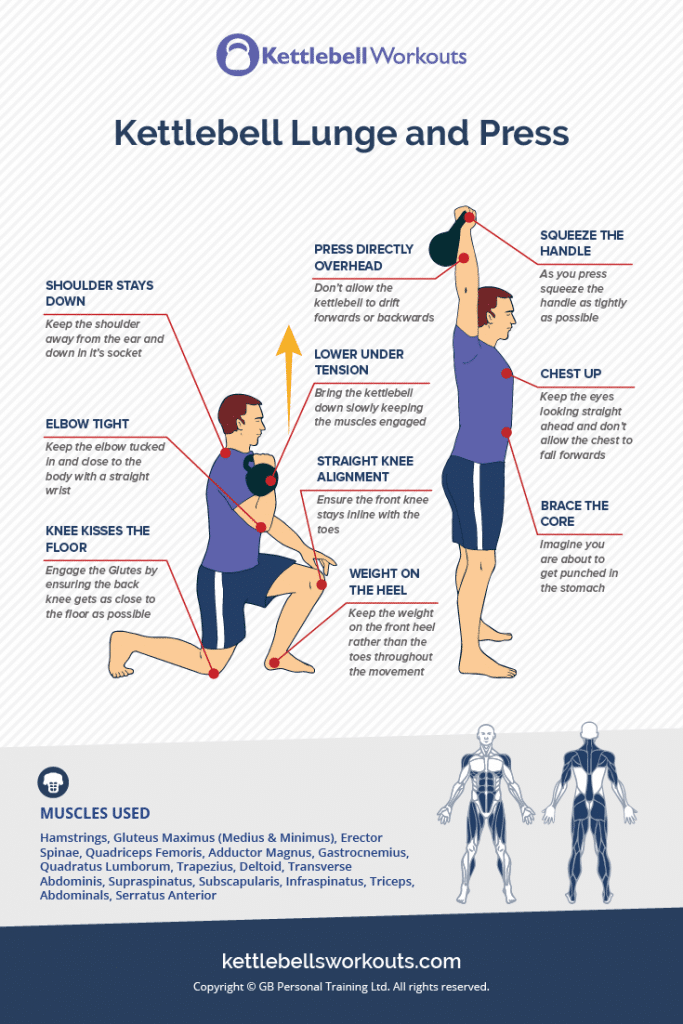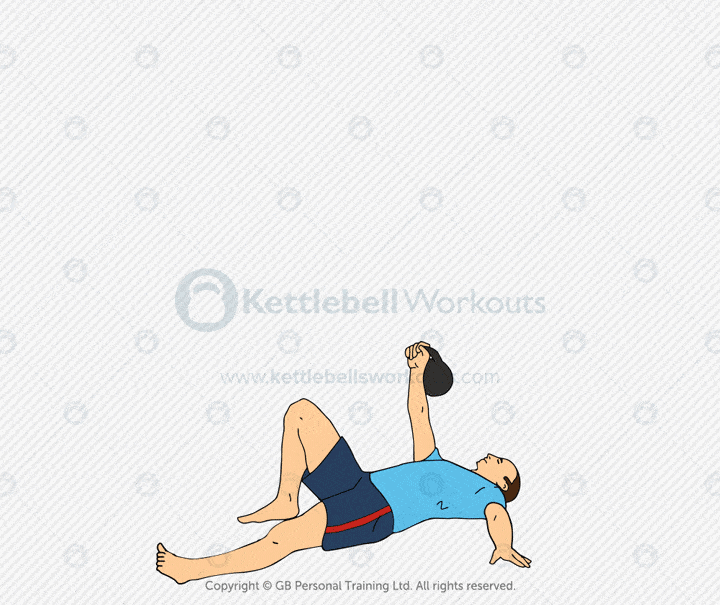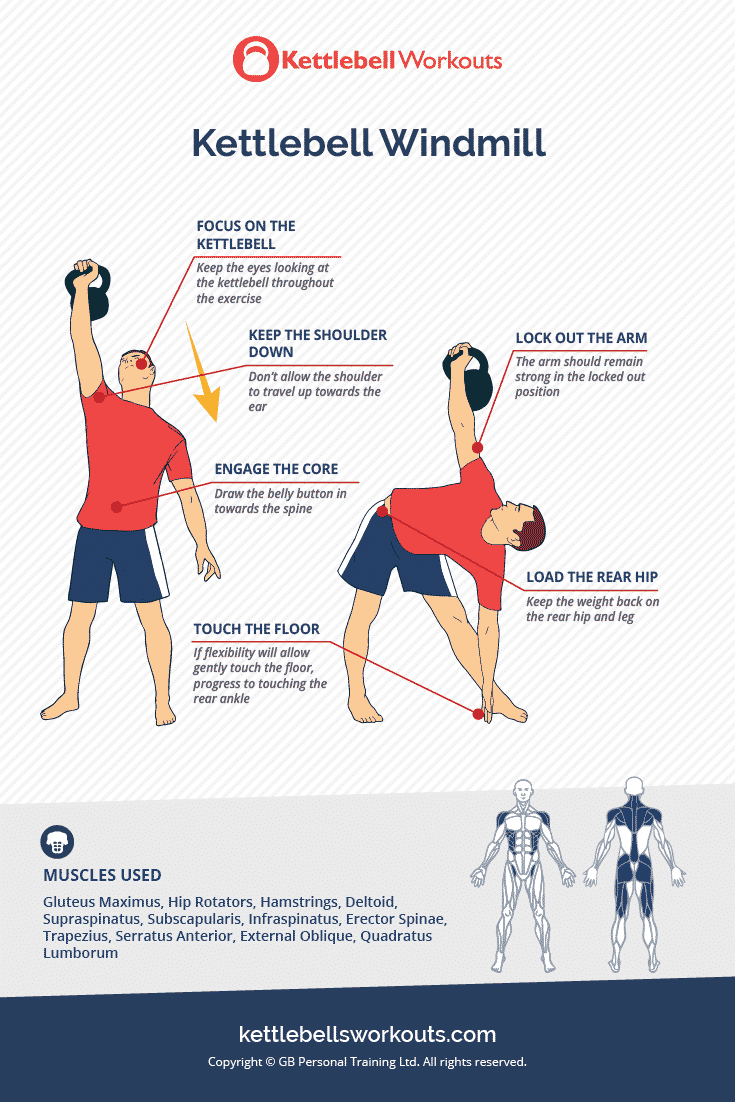Last Updated on 29 July 2025 by Greg Brookes

The kettlebell lunge and press is a total-body drill that blends unilateral leg work with overhead pressing.
It’s simple in theory, but highly demanding in execution, challenging your stability, posture, and strength from head to toe.
This guide will walk you through how to perform the movement safely and effectively, highlight key benefits, and show how to work it into your kettlebell training sessions.
What Is the Kettlebell Lunge and Press?
This exercise combines a reverse lunge with an overhead press.
You step into a lunge and then drive the kettlebell overhead as you stand again, typically using one arm. It can also be performed from a static lunge position.
This combination targets multiple muscle groups while reinforcing balance, mobility, and total-body coordination.

Why It Matters
Unlike isolated lifts, the kettlebell lunge and press teaches the body to coordinate complex, multi-joint movements under load.
You’ll build:
- Single-leg strength and control
- Shoulder and core stability
- Hip mobility and balance
- Functional strength that transfers to daily movement and sport
It’s a great way to reveal asymmetries and address weak links in your kinetic chain.
Muscles Worked
- Glutes
- Hamstrings
- Quads
- Deltoids
- Core stabilisers
- Obliques
- Calves
- Forearms
How to Do the Kettlebell Lunge and Press (Step-by-Step)
- Clean the kettlebell into a racked position.
- Step back into a lunge.
- Return to standing and simultaneously press overhead.
- Keep your torso upright and core braced.
- Repeat all reps on one side before switching.
Tip: Move slow and controlled. Stability matters more than speed.
Watch the kettlebell lunge and press in action:
Common Mistakes to Avoid
- Leaning forward or arching the back during the press
- Rushing through the lunge without proper depth
- Letting the kettlebell drift out of alignment overhead
- Losing balance by stepping too narrow or wide
Warm-Up Drills to Prep for the Movement
- Split Stance Overhead Reach (5 per side)
- Kettlebell Rack Hold March (30 seconds)
- Deep Lunge Hip Openers (5 per side)
- Band or Wall Shoulder Openers (10 reps)

Programming Tips and Reps
- 5–10 reps per side
- Perform 2–4 sets based on experience and load
- Ideal as part of a strength or mobility-focused workout
Pair well with:
- Kettlebell Front Squats
- Turkish Get Ups
- Single-Leg Deadlifts

When to Use This Exercise
- Mid-workout for coordination and single-leg focus
- In supersets with pulling or posterior chain work
- As a challenge finisher for advanced clients
This move works well when time is limited and you need maximum return on effort.
Coach’s Insight: Greg’s Take
I use this one a lot in assessments, it tells me everything I need to know about a client’s balance, shoulder control, and core stability.
It’s also incredibly efficient. If you’ve only got 10–15 minutes, this is one of those movements that hits hard without wasting time.
Use a light-to-moderate load, focus on control, and keep your posture tall throughout the lift.
Kettlebell Lunge and Press vs Lunge to Press
The terms are sometimes used interchangeably, but technically:
- Lunge and press is simultaneous, step and then press as you stand
- Lunge to press is sequential, lunge first, press after standing
Both are effective, but the simultaneous version requires greater timing, control and is more cardiovascular.
Who Should Do This Exercise?
- Intermediate kettlebell users and up
- Clients working on joint stability
- Athletes who need single-leg coordination
- Lifters looking for efficient full-body training
Related Exercises You Can Try Next
Want More Smart Kettlebell Training?
Ready to improve balance, build real strength, and move better with every rep?
Explore my growing library of kettlebell tutorials and programs, all designed to make your training more efficient and effective.
Want powerful legs and shoulders? Explore all kettlebell exercises for strength and balance.
Frequently Asked Questions
Reverse lunges are more stable and easier on the knees. Forward lunges require more control.
Either works. Pressing at the bottom adds difficulty and forces better bracing.
If you’re wobbling, twisting or can’t control the kettlebell overhead, regress to a static lunge and build control first.




Comments